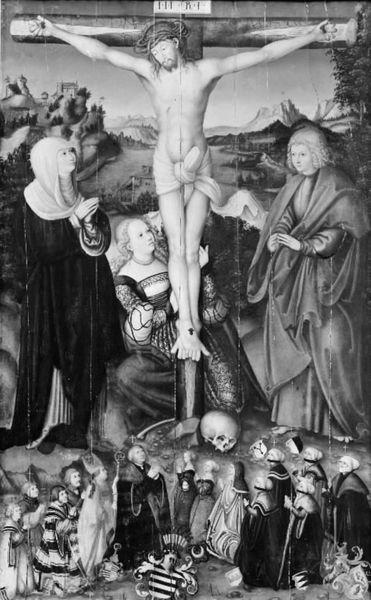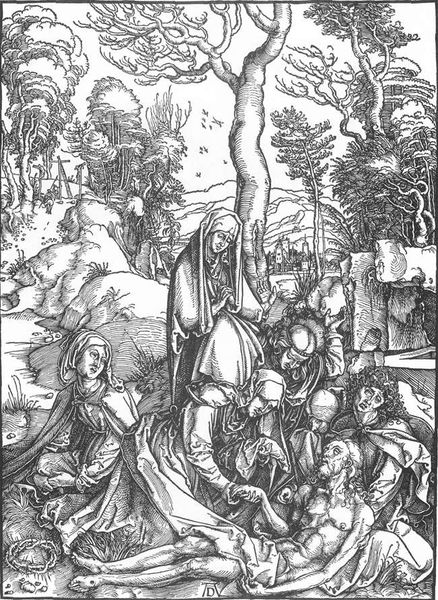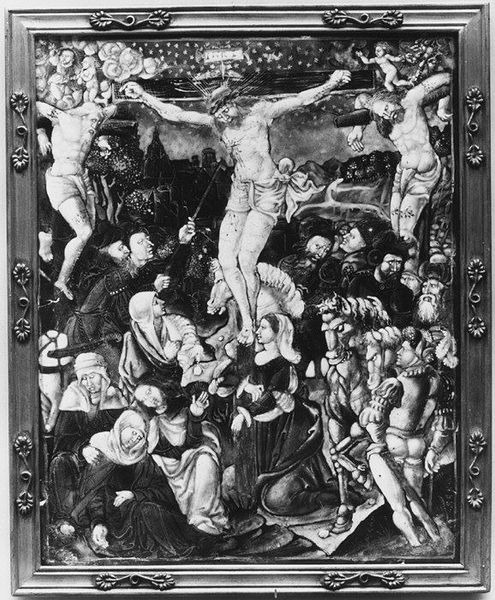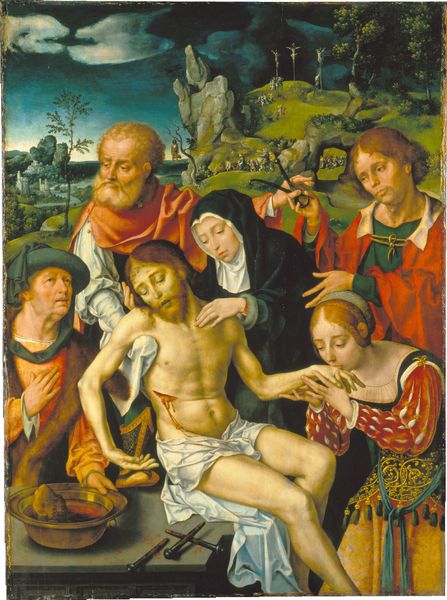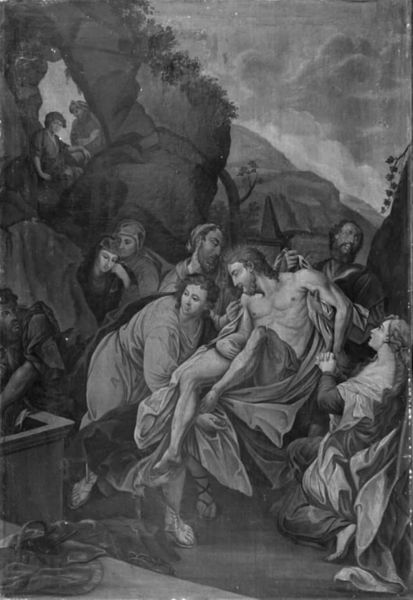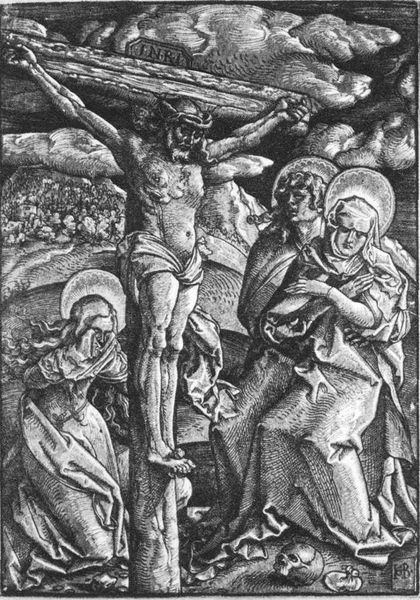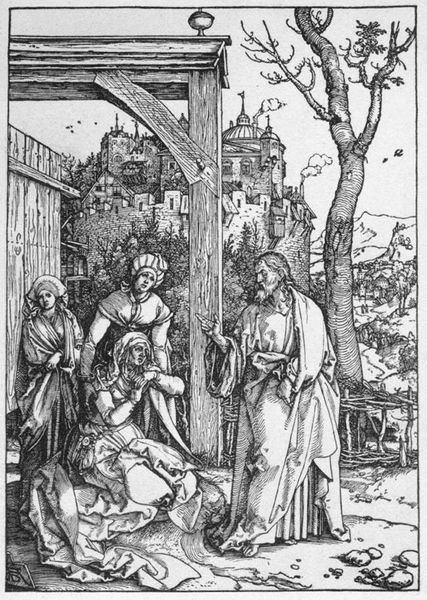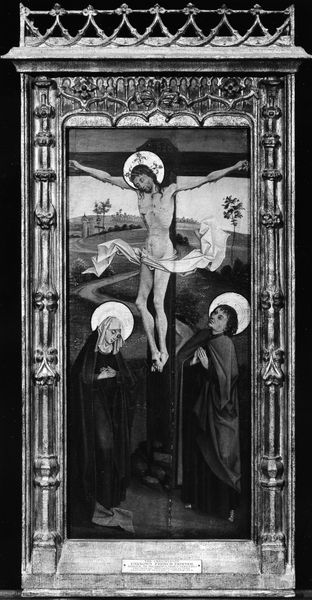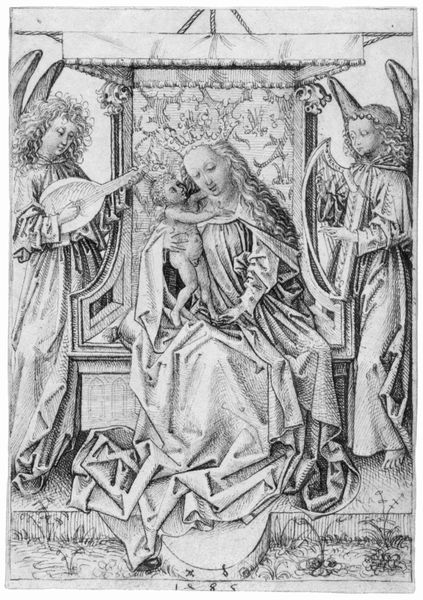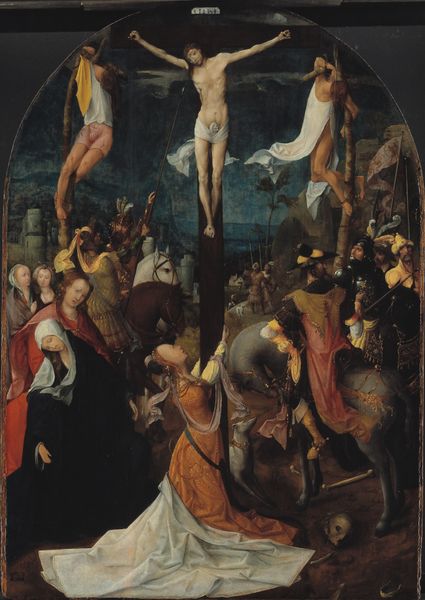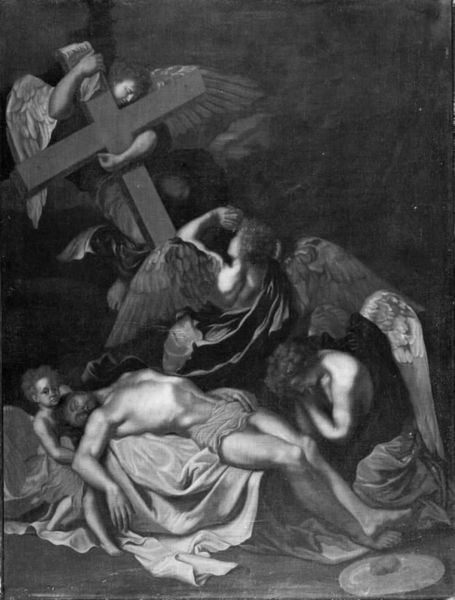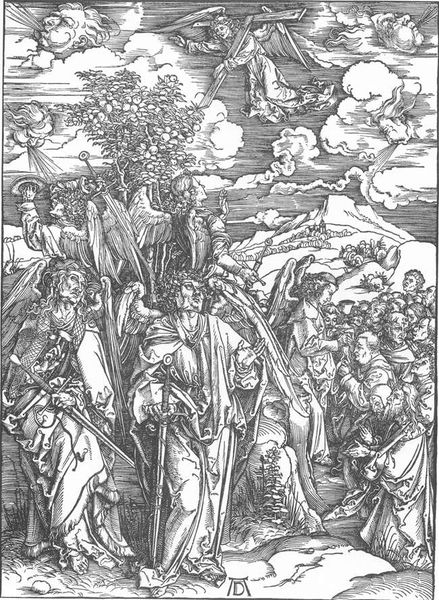
painting, wood
#
medieval
#
narrative-art
#
painting
#
figuration
#
wood
#
history-painting
#
early-renaissance
Dimensions: 117 cm (height) x 90 cm (width) (Netto)
Curator: This is *The Lamentation*, an early sixteenth-century painting currently residing here at the SMK, Statens Museum for Kunst. It's attributed to the Mesteren fra det hell. blods broderskab – literally translated, The Master from the Holy Blood Brotherhood. Painted on wood, it powerfully captures a moment of collective grief. What’s your immediate reaction, Editor? Editor: Overwhelming sadness, of course, but tinged with a very specific kind of medieval European sorrow. It feels stylized, somehow both performative and deeply personal at once, like an operatic scream held tight within the body. Plus a few very peculiar sartorial choices happening. Curator: Indeed. The painting depicts the Lamentation of Christ, a common theme in religious art where mourners grieve over the body of Jesus after the crucifixion. These Brotherhood artists are well-known for their emotive devotional works; art serving a clear didactic function in their communities. The expressions on the faces of Mary, John, and the others gathered, underscore the tragedy. Editor: I find the composition really fascinating. We’ve got this claustrophobic, almost stage-like grouping in the foreground, then a bizarrely rendered crucifixion scene unfolding simultaneously in the back— with the extra added crucified souls off to either side. The skull in the foreground reminds us: death is the main character. A character for all time! Curator: The juxtaposition of these elements, like you noted, blends a somewhat compressed perspective with symbolic depth. The ladder is an interesting inclusion, symbolizing both the removal of Christ from the cross, and perhaps metaphorically referencing a descent from heaven to the human realm. We are reminded how early-Renaissance artwork drew simultaneously from earlier artistic conventions and emerging pictorial strategies. Editor: The garments strike me – all that opulent finery in the midst of utter devastation. Is that to amplify the subjects' standing or intended to make a wider socio-political point? And tell me, Curator, do you get the feeling some painter’s assistant was experimenting with that landscape backdrop? It's…stylistically adventurous, shall we say. Curator: Your keen eye does not deceive! One could interpret the figures attire as an indicator of the patron’s social class or, to your point, perhaps a coded critique. Regarding the landscape: that more generalized style echoes many workshop conventions. In sum, all these things combine, in fascinating ways, in one image. Editor: Looking at it more closely, it's this collision of intensely felt sorrow and slightly detached observation that intrigues. Makes me want to understand this moment, and maybe the artist behind it all, just a little better.
Comments
No comments
Be the first to comment and join the conversation on the ultimate creative platform.
